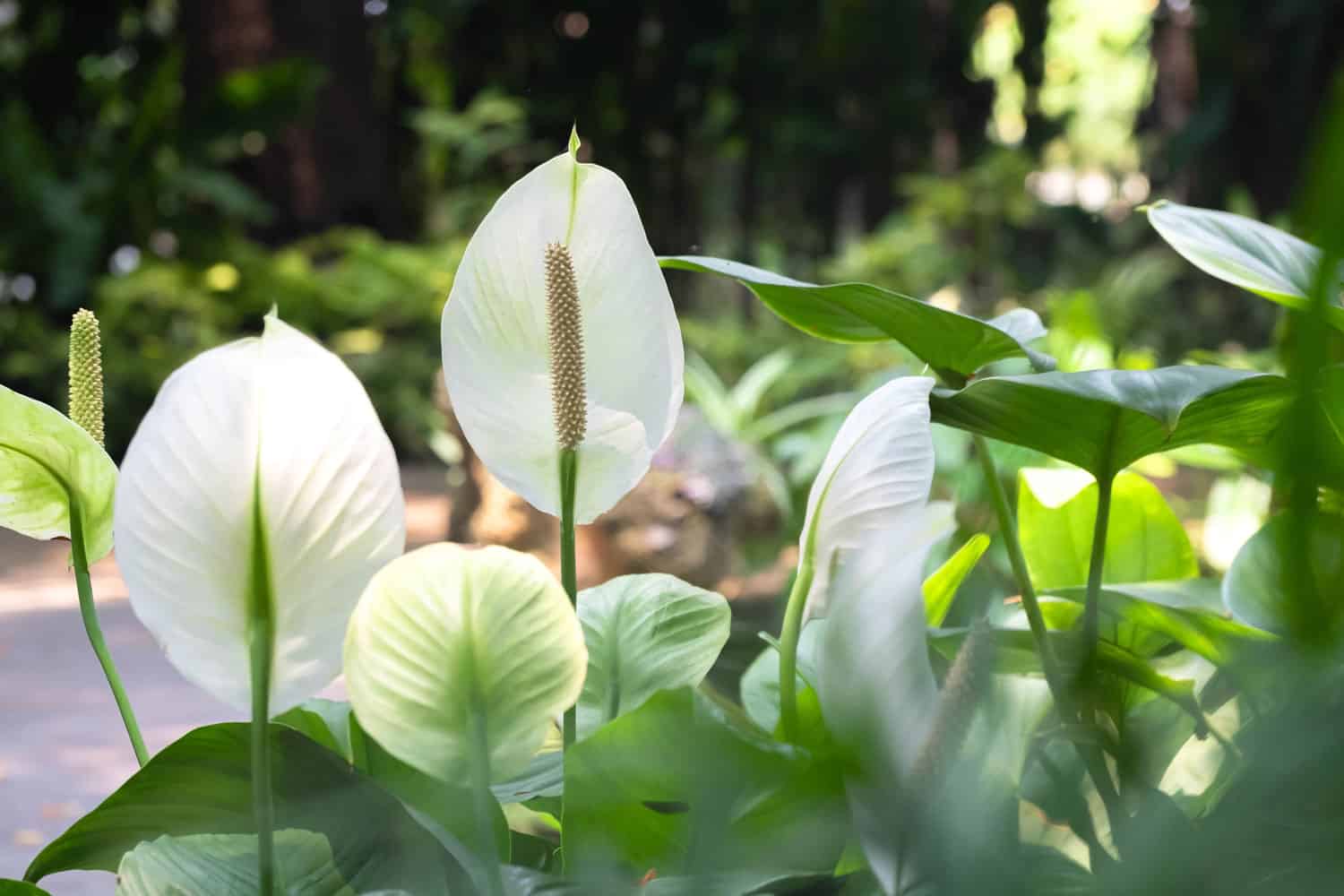Winter can be a challenging time for peace lilies. These plants are native to tropical rainforests and thrive in warm, humid environments.
When temperatures drop, and the air becomes dry, peace lilies can struggle to survive.
Temperature is one of the most important things to remember when caring for peace lilies in winter.
These plants prefer temperatures between 65°F and 85°F, so keeping them away from cold drafts and windows is essential.

If you live in a colder climate, you may need to move your peace lilies indoors or provide extra insulation to keep them warm.
Additionally, you'll want to be mindful of watering and fertilizing, as peace lilies have different needs in the winter than during the summer months.
Understanding Peace Lilies
The peace lily, also known as Spathiphyllum, is a plant that is native to Tropical America and is known for its beautiful white flowers and glossy green leaves.
Peace lilies are also great air purifiers, making them a popular choice for indoor spaces.
Peace lilies, known for their relative ease of care, have distinct requirements. They thrive in bright, indirect light environments and necessitate maintenance in warm and humid conditions.
And here's the great news: when you master the art of caring for your peace lily, it will flourish and become a long-lasting source of delight in your home!
Signs of Cold Damage
Peace lilies are tropical plants that thrive in warm and humid environments. However, they can still survive in temperatures as low as 60°F.
If the temperature drops below this, your peace lily may show signs of cold damage. Here are some common signs to look out for:
Yellow Leaves
Yellowing leaves are one of the first signs of cold damage in a peace lily. The cold can cause the plant to go into shock, resulting in the leaves turning yellow.
Brown Tips
Another sign of cold damage is brown tips on the leaves. This is because the cold can cause the plant to lose moisture, which can result in the tips of the leaves turning brown.
Wilting
If your peace lily is exposed to cold temperatures for an extended period, it may start to wilt.
This is because the cold can damage the roots, making it difficult for the plant to absorb water.
It's all about finding that sweet spot with steady temperatures and just the right amount of humidity to keep your peace lily happy and healthy.
And remember not to overwater it! If you ever spot your peace lily dying, it's best to jump into action immediately!
Preventing Cold Damage
Cold damage can cause stress to your plants and even lead to death. Here are some tips to help prevent cold damage:
Proper Placement
During winter, keeping your peace lilies away from cold drafts and sudden temperature fluctuations is essential.
Please place them in a location within their preferred temperature range.
Humidity Levels
Peace lilies thrive in high humidity levels, even during winter. To moisten the air around your plants, use a humidifier or place a tray of water near them.
Avoid using cold water to water your peace lilies, and make sure the soil dries out between waterings to prevent root rot.
Recovering from Cold Damage
Here are some steps you can take to help your plant recover.
Watering Techniques
When watering a peace lily damaged by cold, it's essential to use room-temperature water. Cold water can shock the plant and cause further damage.
Check the soil before watering and allow it to dry out between waterings. Overwatering can lead to root rot, which can be fatal for your plant.
Pruning Damaged Parts
Dead or brown leaves should be removed, as they will not recover. You can use sharp scissors or pruning shears to make clean cuts. Be sure to sterilize your tools before and after pruning to prevent the spread of disease.
Replanting
Choose a pot slightly larger than the current one and fill it with a well-draining potting mix. Gently remove the plant from its existing pot and loosen the roots.
Place the plant in the new pot and fill any gaps with additional soil. Water the plant thoroughly and place it in a location with bright, indirect light.
Long-Term Care Tips
To ensure the survival of your peace lilies during the cold seasons, you need to provide them with proper long-term care. Here are some tips to help you keep your peace lilies healthy and thriving all year round.
Fertilization
Peace lilies require regular fertilization to maintain their health and vitality. It would be best to fertilize your plants every two to three months with a balanced, water-soluble fertilizer.
Be sure to follow the instructions on the fertilizer package carefully to avoid over-fertilization, which can damage the plant's roots.
Regular Monitoring
Monitoring your peace lilies regularly ensures they are healthy and thriving. Check your plants regularly for signs of pests, diseases, or other problems.
If you notice any issues, take action immediately to prevent them from becoming more severe.
Final Thoughts
While adaptable to various environments, Peace Lilies require special attention during winter to thrive. It's crucial to shield them from cold drafts and maintain stable temperature and humidity.
Regular watering is critical, but be vigilant against overwatering to prevent root rot. Positioning them nearer to a window or using artificial lighting in dimmer winter light can be beneficial.
Promptly address signs of cold damage like yellow or brown leaves by trimming damaged foliage and adjusting care practices, ensuring your peace lily remains a beautiful addition to your home.

